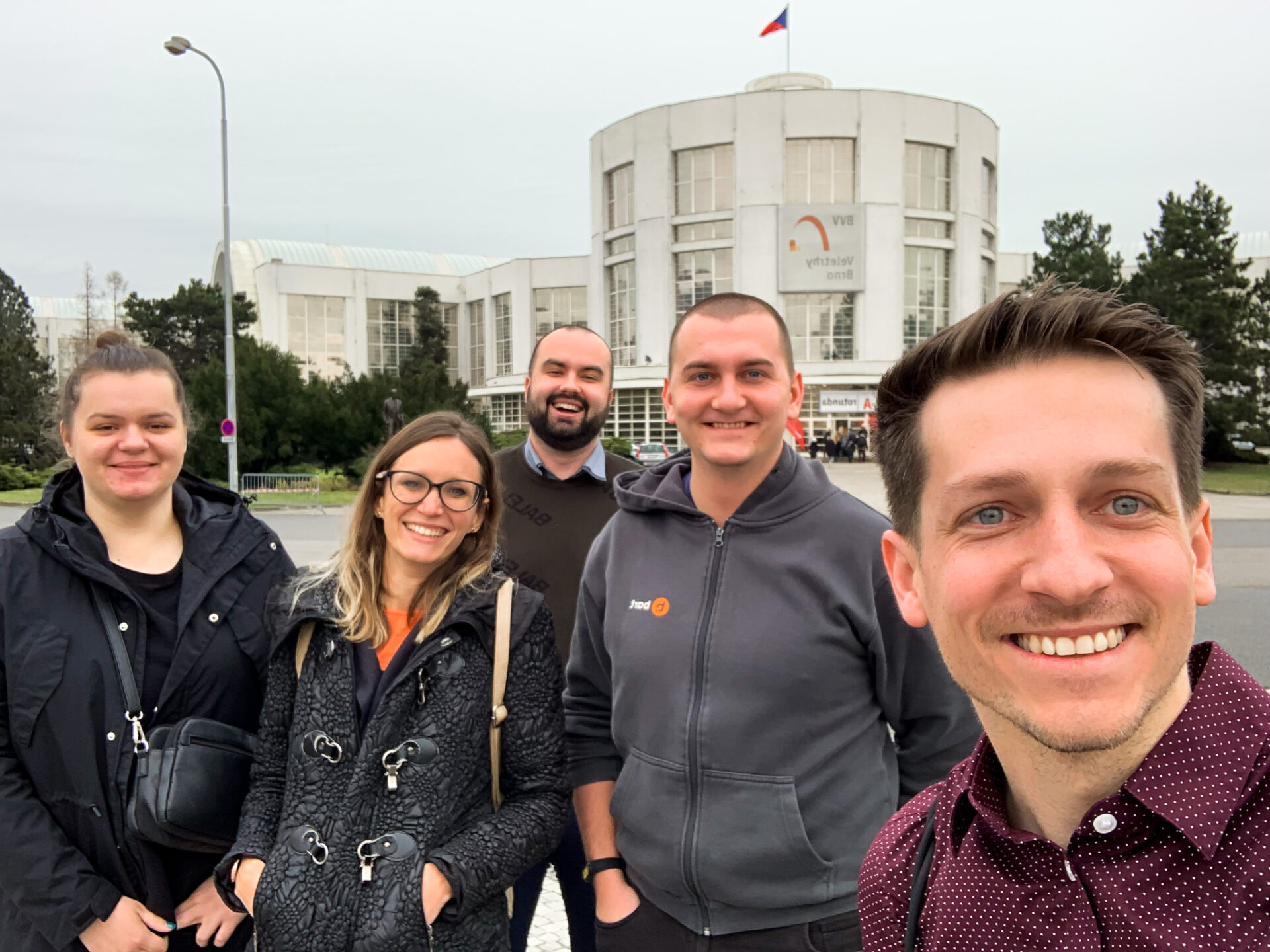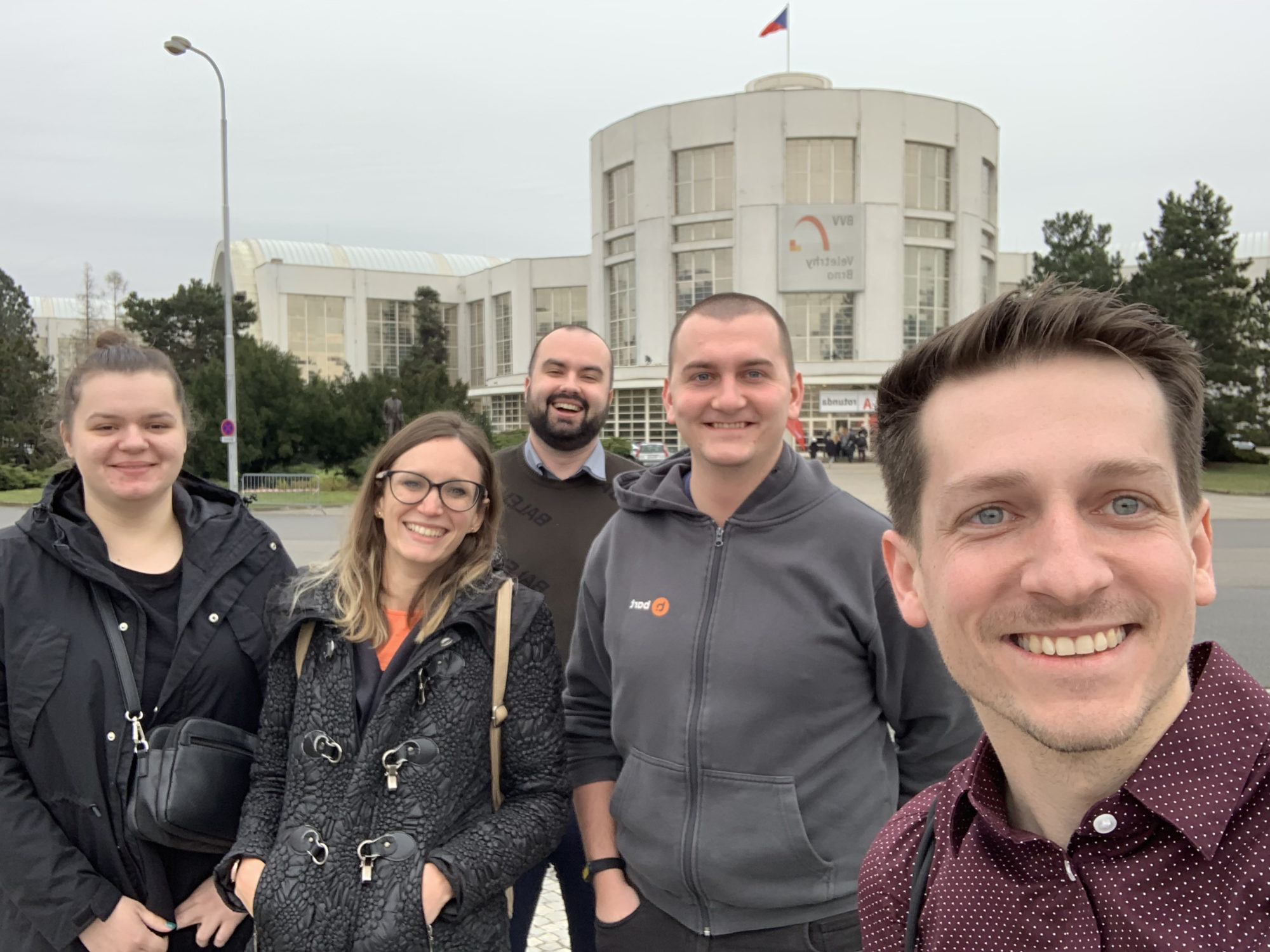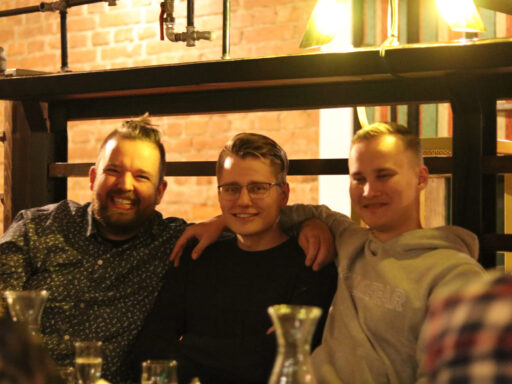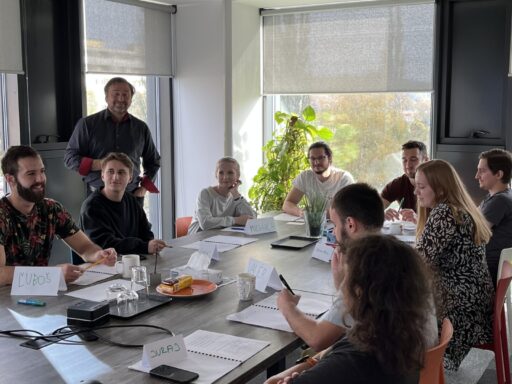At the Crossuite project, testing is an important part of development. That’s why we’ve had a separate, currently 7-member testing team within it for 6 years, which is constantly improving its processes. In order to continue this trend, we decided to visit a QA conference in Brno in March. TestCrunch boasts the title of “the best and largest test conference in the Czech Republic and Slovakia“. As proper testers, we had to test it out. Conclusion? We agree!
We’re doing it right
This is exactly what the conference confirmed. For example, in the lecture titled “Is BDD in UI Automation Still Valid?” Mykhailo Semenikhin talked about the need to use Behavior Driven Development in testing. In this case, the test scenarios are written as clearly as possible so that non-technical team members can test the software too. For example, we write our acceptance tests in this way, so we nodded our heads happily throughout the lecture so as to say that yes, it really is great.
The same was true for Lukáš Piška’s entry called “Green Reports or How to Maintain the Tester’s Mindset”. It talked about the fact that when reporting to a client, it’s not uncommon to manipulate the success of reports just to make it look good. Such an unfair technique is most common just before the date of launch of a new functionality. We, just as the speaker, don’t partake in it. We report red tests honestly and assign priority to bugs according to their importance.
We found a bug on Alza!
My colleague, tester Ľudo, was most interested in the presentation titled “Your iPhone Is Not the Whole World, Test It as a Real User”. “For me personally, the best lecture was the one about web performance testing. Radim Daniel Pánek started by asking whether we test the applications that someone should use, in a real user environment. It seemed like a definite answer. But then we came to the fact that when simulating the real working environment of users, we should also account for, for example, a slow network, various peaks and the like. Only now did we begin to understand the principle of the question he had posed at the beginning. Usually, we test software in a test environment in our office, where the conditions are ideal. So that’s something we have to work on. But the best part of the lecture was that at the end, Radim revealed a critical bug in Alza’s production! I won’t say what it was, but it really was the cherry on the cake. :D” In addition to this lecture, colleagues Katka and Andrea also appreciated “Security Testing Never Ends” by Matěj Groman, because it was full of practical examples.
AI as technical support
Wehat we were probably most looking forward to was the lecture called “AI in Test Automation” by Rhona Asgari. At work, we’ve already tried ChatGPT to generate automated tests, but we were mainly interested in how to use its potential to the fullest. The presentation led us to the idea that if we teach it well and input it with relevant data, it can probably generate usable scenarios as well. On top of that, based on learning from our code, it could simply automate these scenarios. We’re even thinking about the potential of using the chat as technical support for our customers in the future. When testing, it can learn how the application should work, and then translate this knowledge into answers to users’ questions. However, we’re still considering risks such as the topic of data leaks committed by such a large company as Samsung, or ignorance of the processes of intelligent chatbots’ functioning.
My colleague Sam summed up the feelings from the presentation about AI nicely: “The lecture explained the whole hype around AI today to me. Thanks to it, we subsequently tried using ChatGPT on our project as well, when writing a simple test scenario and an automated test, while entering the name of the user story and acceptance criteria. I had a good feeling about a number of lectures that assured me that our QA standards were set correctly and we’re going in the right direction. I was pleased with the standard of the whole conference, which was carried in a relaxed atmosphere, but at the same time it was conducted professionally. All the lecturers were very well prepared and were able to attract attention throughout the whole day of lectures.”
We’re going to have a testathon!
Finally, also thanks to the lecture called “How Testing Is Evolving in DevOps” by Szilárd Széllo, we’ve confirmed that testing is an important part of the entire development spectrum, from planning up to delivery. The QA team should make sure that its feedback reaches the creation of new functionalities as early as at the beginning of their preparation, but at the same time, of course, it must not be missing in the other steps, until the final delivery of the product. Thanks to this, it’ll be possible to detect security problems at the beginning of development, provide feedback to developers already in the process of designing prototypes and focus on the comprehensibility of the application for the target user.

However, what we’d like to add to our process are stronger penetration and performance tests or AWS Fault Injection Simulator (FIS) operating on the principle of the so-called chaos engineering. So it works with the application in random and unpredictable situations, not in logical procedures that are commonly carried out by experienced users. Alternatively, various problems are deliberately caused and how the software reacts to them is monitored. In this way, we’ll be able to identify weaknesses in the system and subsequently create programs that are able to withstand various types of malfunctions. We’d also like to try out chaos engineering manually, for example at the bartan premiere testathon. We believe it’ll happen soon.
Conclusion in the words of our colleague Andrea: “The lectures at the conference were a good mix, each one attracted somebody’s interest. They also had great food and a variety of activities during breaks 🙂 It was definitely worth the trip and we achieved the goals for which we decided to participate in the conference.”
And for me personally, the conference was a great conclusion to four years of working as part of the QA team, which I have now exchanged for a DevOps position. But I leave it in good hands and I believe that everything my colleagues learned in Brno will be put into practice. And as DevOps and QA go hand in hand, I look forward to continuing to work together, albeit perhaps on a different level. But I still stay in the same office, with the same people around me and with the same vision – to improve the quality of the application and bring real value to end users.










